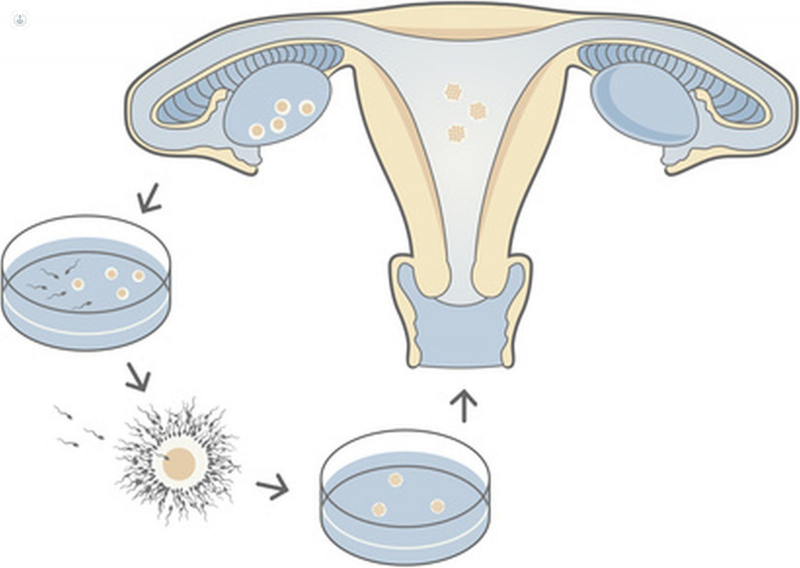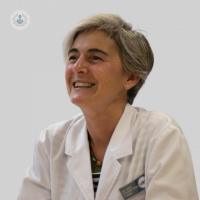Éxito en FIV, ¿cómo se calcula?
Written by:Patients who face an in vitro fertilization (IVF) cycle want to know the probability of success they can get from this treatment; a success they get if after an IVF cycle they return home with a child.
This information, which should be simple to obtain, is complex to give, since the success of IVF depends on several factors, mainly the age and diagnosis of the couple. In addition, it can be expressed in several ways, some difficult to interpret by patients.
Child-at-home rate per IVF cycle started VS pregnancy rate by embryo transfer
Although patients want to know the "home-child rate per cycle of IVF started," they will mostly find that fertility clinics talk about the "embryo transfer rate". What does this mean? How do they differ from each other?

To begin with, we must bear in mind that the treatment of IVF has several phases. The woman performs an ovarian stimulation; puncture or extraction of ova from the ovaries; mature oocytes obtained are inseminated with spermatozoa; and of the resulting embryos, those that are evolutionary are chosen and transferred to the uterus. After 15 days, a pregnancy test is performed, and if it is positive, after 40 weeks, the desired child will be born.
When we talk about "home-child rate per IVF cycle started" we include all women who doing an IVF get a delivery. However, the "embryo transfer pregnancy rate" includes women who have confirmation of pregnancy by ultrasonography following an embryo transfer, but excludes those who have not had embryo transfer because the treatment has not gone well.
The reasons for not achieving embryo transfer are varied. They are women who have started the treatment and do not get an egg extraction because they do not respond well to the stimulation of the ovaries; women who, after puncture, get oocytes, but are not mature or fit to be inseminated; couples who can not get embryos; or couples that get embryos but are not evolutionary or of sufficient quality to be transferred. In addition, this "pregnancy rate through embryo transfer" also excludes women who, upon confirmation of pregnancy, have had an abortion, extrauterine pregnancy or any other complication during pregnancy that prevents delivery.
In conclusion, while the "home-child rate per IVF cycle" includes all couples, the "pregnancy transfer rate" includes only those with the best prognosis, and therefore this second number will always be better than first. As an example, let's say the overall results of all reproductive clinics in Spain in the year 2015, according to the woman's age, which have recently been published by the " National Activity Registry 2015 - SEF Registry ". These results show values of "home-child rate per IVF cycle" (with or without ICSI ) below half that of "embryo transfer pregnancy rate", especially in women over 40 years of age, where in many cases embryonic transfer is not reached and the risk of abortion is greater.

IVF success according to age and diagnosis
The age of the woman is the factor that conditions the success in IVF. The diagnosis and clinical history of the woman or couple also adds a number of more or less important factors that alter the prognosis of IVF. It is normal for fertility clinics to have tables showing the success in IVF according to the woman's age and diagnosis, but it is impossible to achieve a combination of the two, since they are very individualized factors of each couple. It is the mission of each reproduction specialist, therefore, to make an assessment of how both factors are combined for each woman or couple.
FIV success according to the number of embryos transferred
The pregnancy rate in the clinics may also vary according to the number of embryos transferred in the IVF. The percentage of transfers performed with 1, 2 or 3 embryos provides extra information to patients about the quality of the clinical and laboratory work of IVF. It seems clear that if a center achieves the same results with a majority of transfers from 1 embryo to another with 3 embryo transfers, the former will have a higher quality of clinical and laboratory work than the second. The data that numerically reflects this reality is the "rate of implantation", that is, the probability of pregnancy achieved by each transferred embryo.
Success in IVF according to SEF
The Spanish Fertility Society (SEF) makes an annual and sustained effort to publish the success of Spanish fertility clinics, center-to-center and globally. It is not an easy task. Finally he has chosen to present data on IVF treatments, ovodonation, cryotransferences derived from these treatments and from insemination. In the data of each center, the results are given as "pregnancy rates by embryo transfer" according to the treated age group; gives the percentage of transfers of 1, 2 and 3 embryos, and the implantation rate per embryo.
The SEF presents the results of pregnancies in a number range, instead of a specific number. This is so to be able to take into account the number of treatments that each clinic does and reflect the reality more reliably. There are clinics that perform thousands of treatments a year, while in others they do not exceed one hundred. It is evident that variability in a clinic year by year will be greater in clinics with fewer cycles, since the characteristics of their patients will produce important alterations in their results. However, clinics with thousands of treatments, will have more stable results, since the variability of the patients will be normalized with the numerical volume of the same.
The results presented by the SEF are, to date, the most reliable of each center in Spain. These data show that most of the public and private reproduction centers in Spain achieve embryo transfer pregnancy rates in similar numerical ranks according to the age of the woman. However, there are differences in implantation rates, that is, clinics with better clinical and laboratory quality, achieve the same transfer pregnancy rate, with fewer embryos transferred. This means that patients in these clinics will have the highest probability of pregnancy with the lowest possible risk of multiple pregnancy. URH García del Real is among the fertility clinics in Spain with a better rate of embryo implantation (33%), clearly above the Spanish general implantation rate (24.9%), which leads to a high success rate in IVF in our clinic .



